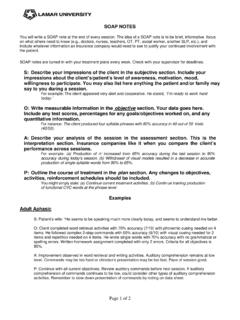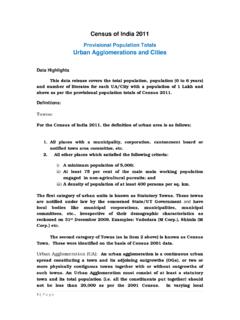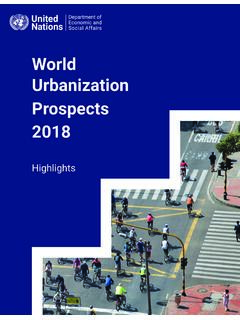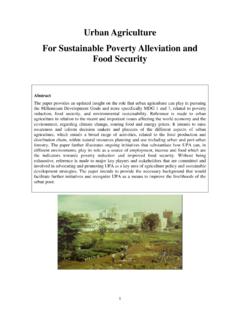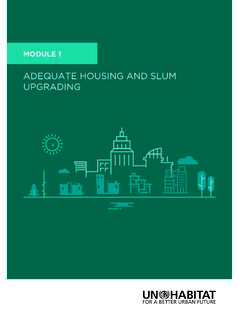Transcription of Hurricane Harvey Facts, Damage and Costs - Lamar University
1 Hurricane Harvey Facts, Damage and Costs What Made Harvey So Devastating BY KIMBERLY AMADEO Updated January 20, 2019 Hurricane Harvey was a Category 4 storm that hit Texas on August 25, 2017. It caused $125 billion in Damage according to the National Hurricane Center. That s more than any other natural disaster in history except Hurricane Katrina. For a wider comparison, the cumulative cost of the five worst hurricanes on record is $497 billion in damages. The bar chart below shows a breakdown. For Hurricane Harvey , Texas Governor Greg Abbott needed more than $125 billion in federal relief. The storm affected 13 million people from Texas through Louisiana, Mississippi, Tennessee, and Kentucky.
2 By October 13, 2017, at least 88 people died from the storm. Harvey made landfall three times in six days. At its peak on September 1, 2017, one-third of Houston was underwater. Two feet of rain fell in the first 24 hours. Flooding forced 39,000 people out of their homes and into shelters. Dallas created a mega-shelter for 5,000 evacuees out of its main convention center. Harvey had a considerable economic impact. The Houston metro area is the nation s fourth largest city with million residents. If it were a country, it would be the world s 23rd largest economy, larger than Poland or Sweden. The Facts on Hurricane Harvey 's Damage Hurricane Harvey damaged 204,000 homes.
3 Three-fourths were outside of the 100-year flood plain. Those homeowners did not have flood insurance. There were 738,000 people who registered for assistance with the Federal Emergency Management Agency, which has paid out $378 million in direct payments. Immediately after the storm, it delivered 80 tractor-trailer loads of emergency supplies, including cots, blankets, and meals. Federal forces rescued 10,000 people who were trapped in their homes or on flooded highways. A flotilla of private boats rescued an unknown number of additional victims. The Houston Police Department's Dive Team rescued 3,000 people in four days. Houston police officer Austin Huckabee said he and four other officers saved 40 people in the first 24 hours.
4 There were 37,000 people in shelters in Texas and 2,000 in Louisiana. Almost 7,000 people were in the George R. Brown Convention Center, where 1,700 received medical treatment. FEMA moved 14,900 to temporary housing. In addition, 8,000 families had moved into 9,000 hotel rooms. Nearly three weeks after the storm, at least 3,900 homes were still without power. There were 77 boil-water notices in effect, 19 water systems were down, and 31 wastewater systems remained offline. Houston Independent School District, which is the largest school district in Texas and the nation's seventh largest school district, reported that 75 of its 275 schools were closed due to flood Damage .
5 In the Gulf area, one million vehicles were ruined beyond repair, according to auto data firm Black Book. That figure included 300,000 to 500,000 vehicles owned by individuals. Harvey flooded 800 wastewater treatment facilities and 13 Superfund sites. That spread sewage and toxic chemicals into the flooded areas. The highest storm surge was feet in Aransas County. It did not create a lot of Damage to humans or property because it occurred in a wildlife refuge. Harvey 's impact spread across the country as gas prices rose. Harvey forced 25 percent of oil and gas production to shut down in the region, affecting 5 percent of nationwide output. Approximately one month after the storm, The Daily Shot reported that refinery activity remained at multi-year lows.
6 Average gas prices rose from $ a gallon before Harvey hit to $ a gallon on August 31, 2017, six days after the storm first made landfall. Harvey affected the Northeast, since it relies on pipelines from the Gulf for its gas. To maintain supply, the Department of Energy released 500,000 barrels of oil from the Strategic Petroleum Reserve. Within ten days after the storm, gas prices had returned to pre- Harvey levels. Rainfall Total rainfall hit inches in Nederland, Texas, a record for a single storm in the continental United States that created an unprecedented 1,000-year flood event. Nothing of that size has happened within modern recorded history.
7 Flooding covered southeast Texas the size of the state of New Jersey. Thirty inches of rain fell on an area near the coast the size of the state of Maryland. Houston lies in Harris County. Its Flood Control District meteorologist Jeff Lindner reported that a foot and a half of water covered 70 percent of the 1,800-square-mile county. The sheer weight of the water depressed the Earth's crust. Houston sank two centimeters as a result; however, it rebounded once the waters receded. In comparison, Hurricane Katrina dropped five to 20 inches of rain in 48 hours. Most of its flooding came from storm surges that overwhelmed the levee system. Federal Aid Package On September 8, 2017, President Trump signed a bill approving $ billion in storm aid.
8 It included an increase in the debt ceiling and an extension of government spending to December 8, 2017. Without a debt ceiling increase, the Treasury did not have enough to disburse the funds to FEMA. Houston received $91 million and the remainder of Harris County received $44 million to pay for debris removal. The storm left 200 million cubic yards of debris. Timeline On August 25, 2017, Harvey reached landfall at Port Aransas and Port O'Connor near Corpus Christi with 130 mph winds. The Category 4 Hurricane left 250,000 people without power. On August 26, Harvey moved on to Houston. It remained there for four days. Two reservoirs overflowed. The highways became waterways.
9 Between 25 and 30 percent of Harris County--home to million people--was flooded. That is an area as large as New York City and Chicago combined. On August 29, Harvey made landfall for a third time as it hit the coastal cities of Port Arthur and Beaumont, Texas on the border of Louisiana. It dumped 26 inches of rain in 24 hours and flooded Port Arthur, a city of 55,000 people. Water entered one-third of the city's buildings, including the shelter. On August 31, an Arkema chemical plant in Crosby, Texas ignited. The chemicals required refrigeration to stay inert. When the storm disabled the cooling equipment, temperatures rose and the chemicals ignited.
10 On September 1, Harvey dropped 10 inches of rain on Nashville, Tennessee. Three Ways Global Warming Made Harvey Worse Climatologists agree that global warming contributed to Harvey s impact. Studies found the amount of rainfall was 38 percent higher because of global warming. There are three reasons for this phenomenon. First, the Gulf region air temperatures were two to three degrees Fahrenheit hotter than in the past, which allowed the air to hold more moisture. Second, rising sea levels made flooding more likely near Gulf Coast cities . The sea levels around Houston were six inches higher than 20 years ago, partially due to warmer temperatures melting the ice caps in Antarctica.


